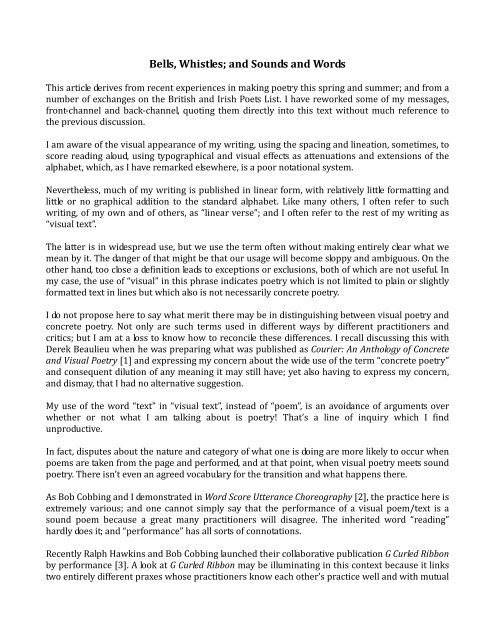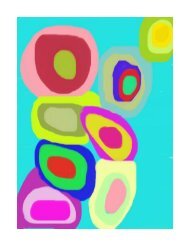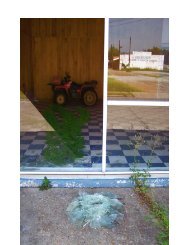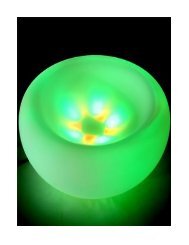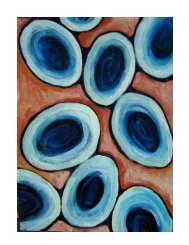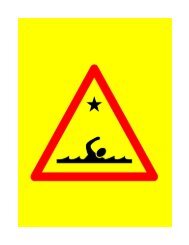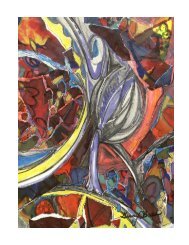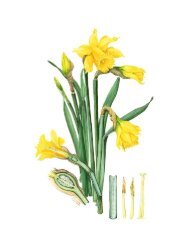Commentaries on Bob Cobbing - The Argotist Online
Commentaries on Bob Cobbing - The Argotist Online
Commentaries on Bob Cobbing - The Argotist Online
You also want an ePaper? Increase the reach of your titles
YUMPU automatically turns print PDFs into web optimized ePapers that Google loves.
Bells, Whistles; and Sounds and Words<br />
This article derives from recent experiences in making poetry this spring and summer; and from a<br />
number of exchanges <strong>on</strong> the British and Irish Poets List. I have reworked some of my messages,<br />
fr<strong>on</strong>t-channel and back-channel, quoting them directly into this text without much reference to<br />
the previous discussi<strong>on</strong>.<br />
I am aware of the visual appearance of my writing, using the spacing and lineati<strong>on</strong>, sometimes, to<br />
score reading aloud, using typographical and visual effects as attenuati<strong>on</strong>s and extensi<strong>on</strong>s of the<br />
alphabet, which, as I have remarked elsewhere, is a poor notati<strong>on</strong>al system.<br />
Nevertheless, much of my writing is published in linear form, with relatively little formatting and<br />
little or no graphical additi<strong>on</strong> to the standard alphabet. Like many others, I often refer to such<br />
writing, of my own and of others, as “linear verse”; and I often refer to the rest of my writing as<br />
“visual text”.<br />
<strong>The</strong> latter is in widespread use, but we use the term often without making entirely clear what we<br />
mean by it. <strong>The</strong> danger of that might be that our usage will become sloppy and ambiguous. On the<br />
other hand, too close a definiti<strong>on</strong> leads to excepti<strong>on</strong>s or exclusi<strong>on</strong>s, both of which are not useful. In<br />
my case, the use of “visual” in this phrase indicates poetry which is not limited to plain or slightly<br />
formatted text in lines but which also is not necessarily c<strong>on</strong>crete poetry.<br />
I do not propose here to say what merit there may be in distinguishing between visual poetry and<br />
c<strong>on</strong>crete poetry. Not <strong>on</strong>ly are such terms used in different ways by different practiti<strong>on</strong>ers and<br />
critics; but I am at a loss to know how to rec<strong>on</strong>cile these differences. I recall discussing this with<br />
Derek Beaulieu when he was preparing what was published as Courier: An Anthology of C<strong>on</strong>crete<br />
and Visual Poetry [1] and expressing my c<strong>on</strong>cern about the wide use of the term “c<strong>on</strong>crete poetry”<br />
and c<strong>on</strong>sequent diluti<strong>on</strong> of any meaning it may still have; yet also having to express my c<strong>on</strong>cern,<br />
and dismay, that I had no alternative suggesti<strong>on</strong>.<br />
My use of the word “text” in “visual text”, instead of “poem”, is an avoidance of arguments over<br />
whether or not what I am talking about is poetry! That’s a line of inquiry which I find<br />
unproductive.<br />
In fact, disputes about the nature and category of what <strong>on</strong>e is doing are more likely to occur when<br />
poems are taken from the page and performed, and at that point, when visual poetry meets sound<br />
poetry. <strong>The</strong>re isn’t even an agreed vocabulary for the transiti<strong>on</strong> and what happens there.<br />
As <strong>Bob</strong> <strong>Cobbing</strong> and I dem<strong>on</strong>strated in Word Score Utterance Choreography [2], the practice here is<br />
extremely various; and <strong>on</strong>e cannot simply say that the performance of a visual poem/text is a<br />
sound poem because a great many practiti<strong>on</strong>ers will disagree. <strong>The</strong> inherited word “reading”<br />
hardly does it; and “performance” has all sorts of c<strong>on</strong>notati<strong>on</strong>s.<br />
Recently Ralph Hawkins and <strong>Bob</strong> <strong>Cobbing</strong> launched their collaborative publicati<strong>on</strong> G Curled Ribb<strong>on</strong><br />
by performance [3]. A look at G Curled Ribb<strong>on</strong> may be illuminating in this c<strong>on</strong>text because it links<br />
two entirely different praxes whose practiti<strong>on</strong>ers know each other’s practice well and with mutual


